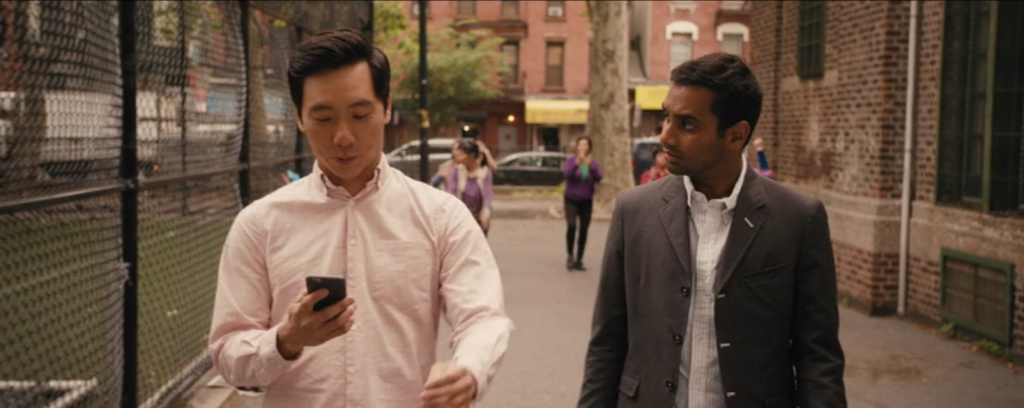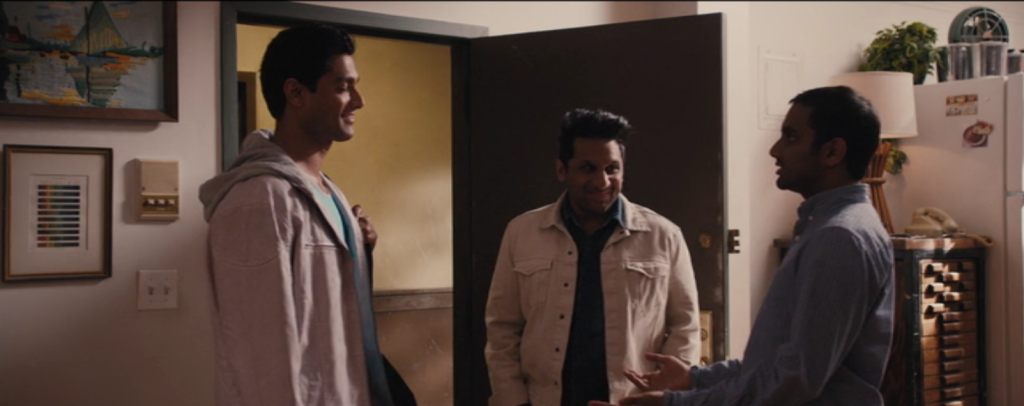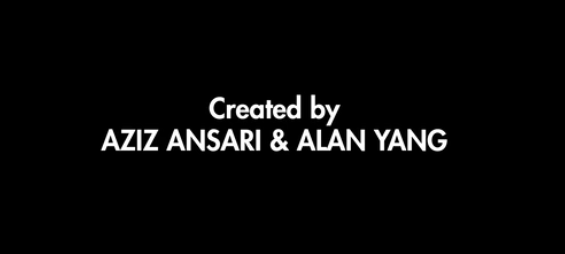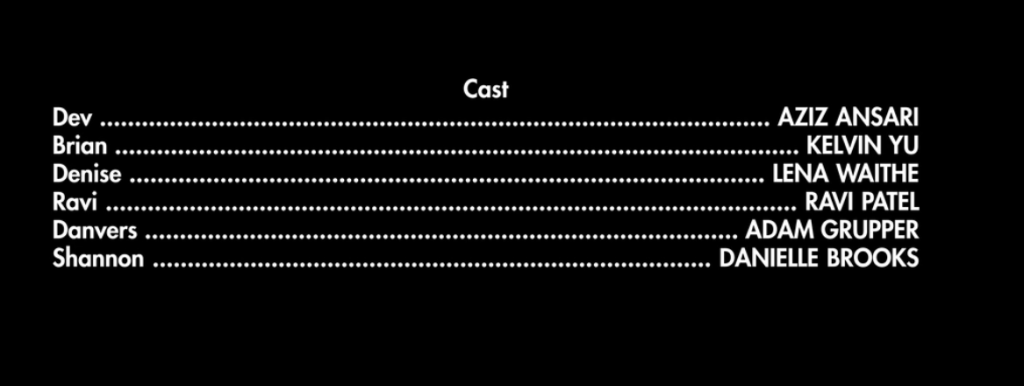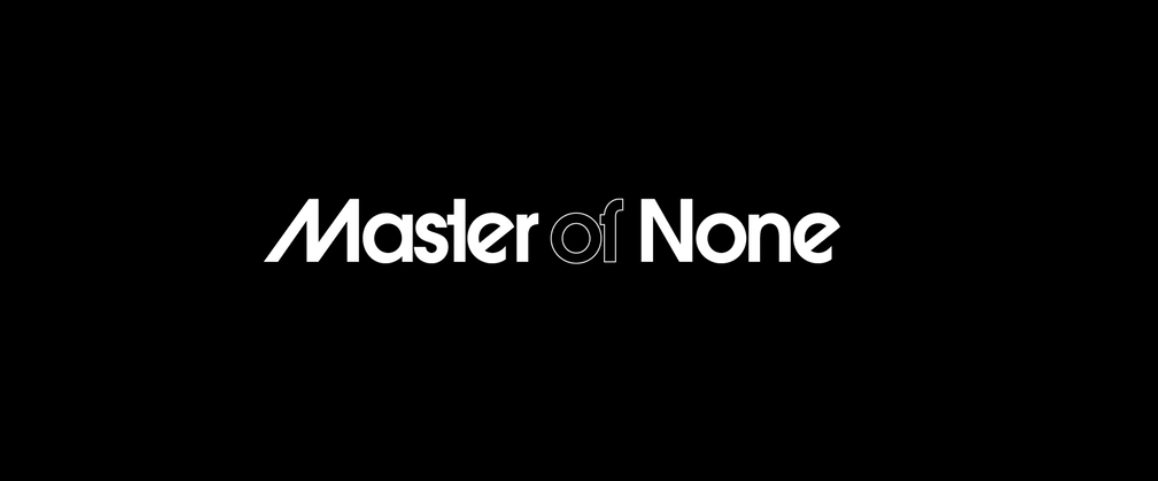
Nov
Diversity Without Pity #3 | Master of None
[responsivevoice_button voice=”UK English Female” buttontext=”Listen to Post”]
The new Netflix series, Master of None depicts the daily life of working New York actor Dev, played by comedian and actor Aziz Ansari. Thematically, there are strong similarities to the seminal single-New-Yorker series Seinfeld, and the FX series Louie — both in which themes of dating, love, family, and friendship are handled with the same quiet sensitivity and pensiveness.
Aziz Ansari on KCRW’s The Treatment
The pilot episode, an also-ran about parenting, I let play in the background. But it was episode 2, Parents, that really peaked my interest. Dev and his friend Brian, played by Kelvin Yu, are discussing their parents’ shared immigrant stories, and reflecting on they should really thank their parents for making their lives more comfortable.
The narrative of second-generation Americans feeling guilty is not new. But what is new is watching two Asian American men — one Taiwanese American, one Indian American — discuss their lives as they walk down a New York City street. It was as if I’d been walking miles in the desert, among sand dunes of white protagonists in fictional TV shows, and this scene came along like the sweetest jug of cold water.
In episode 4, Indians on TV, Dev is dealing with the challenges of being an Indian American actor, and the stereotypical roles he is often faced with. I suspect much will be written about that, so I won’t address it. Instead I want to talk about Dev’s awesome apartment, put together by Katie Bova.
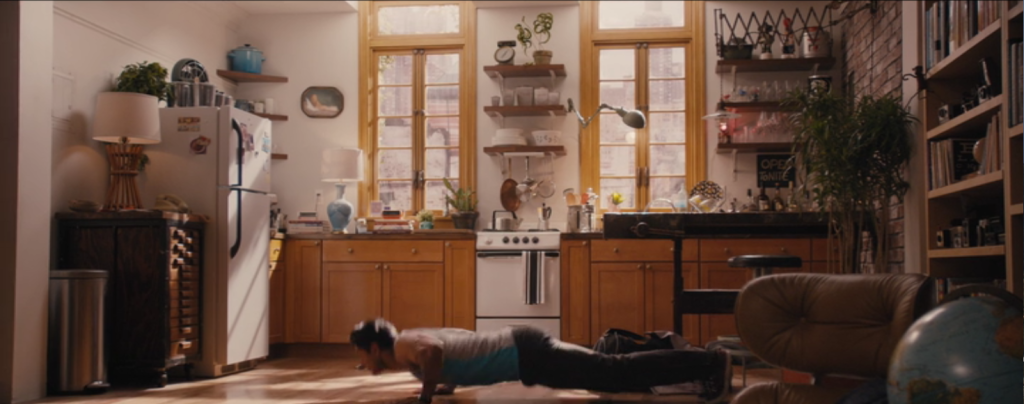
Note the open kitchen, very common in New York apartments. But look at the Eames chair and globe in the foreground, the woodcut credenza near the refrigerator, and the ample use of natural light.
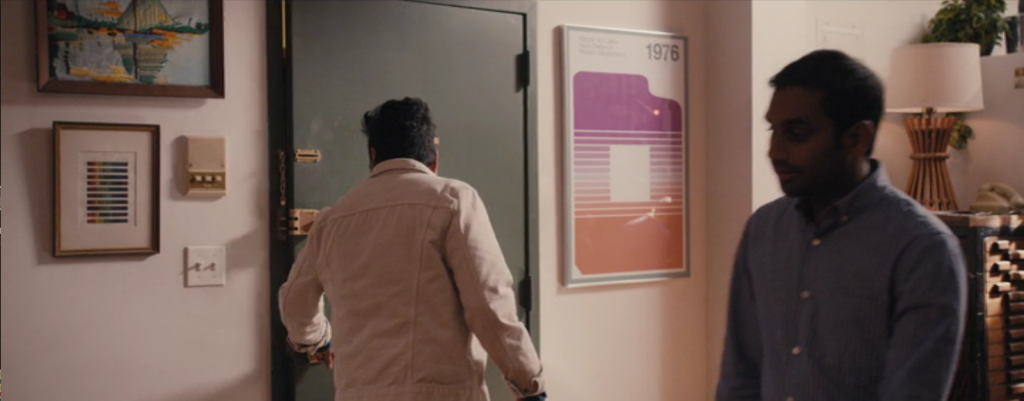
Note the graphic wall art. This reflects a similar graphic style in the poster art and typeface used in the opening sequence of the show (more on that later).
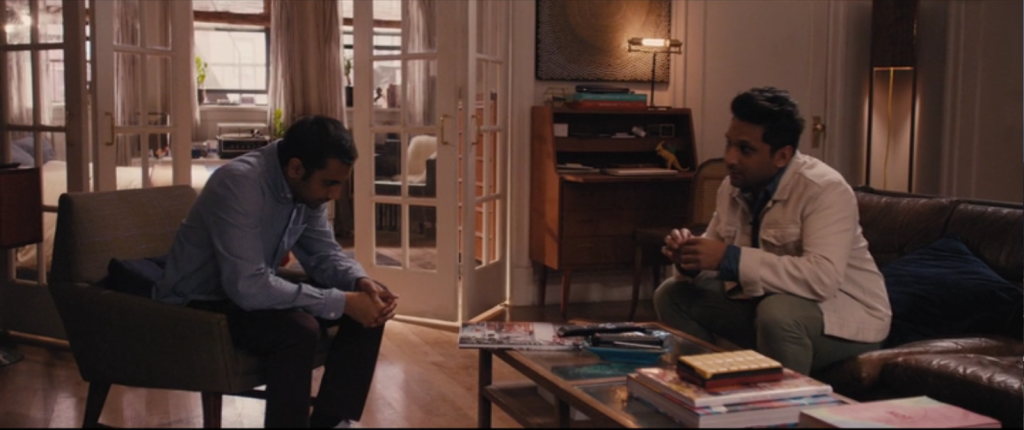
Another nod toward mid-century modernism with the chair, desk, and lamp in the background. I also love the little details, such as the toy dinosaur sitting on the desk. And no bachelor pad is ideal without a big leather sofa.
To some, these kinds of details may not matter when it comes to depicting the lives of modern New Yorkers. But these kinds of details are important, because they are coming from the perspective of a young, stable working actor, who is Indian American, and grew up in South Carolina.
I read somewhere that in literature, white people are allowed to make time, while people of color create space in the background. Meaning, white people are expected to take the time to be self-reflective, consider their personal tastes and interests, and who they want to be in the world. And within that narrative, people of color are just static cardboard cut-outs in the background. They are certainly not modern. They don’t have time to decide how they want to be, because they are too busy fighting back racism (I guess). This is why it is so hard for some to imagine people of color having roommate issues, have difficulty deciding what to eat for lunch, or figuring out if the person they’re dating is “The One.” They make time. But everyone else takes up space. This show is brilliant because Dev takes his time, as much time as he needs. There’s an entire episode sequence of him making homemade pasta. This leads to a larger revelation that I won’t spoil. Master of None does all this without sacrificing Dev’s — and to an extent, Aziz’s — race or ethnic heritage.
And finally, I’ll end on these magical open titles. Shout outs to David McElfresh (visual effects producer) and Laurel Kolsby (graphic designer)
Diversity Without Pity is a blog series from IDSL, highlighting media that uses smart design, and considers the diversity of it’s casting without selling the viewer or consumer, short.
All photos courtesy of Netflix.



